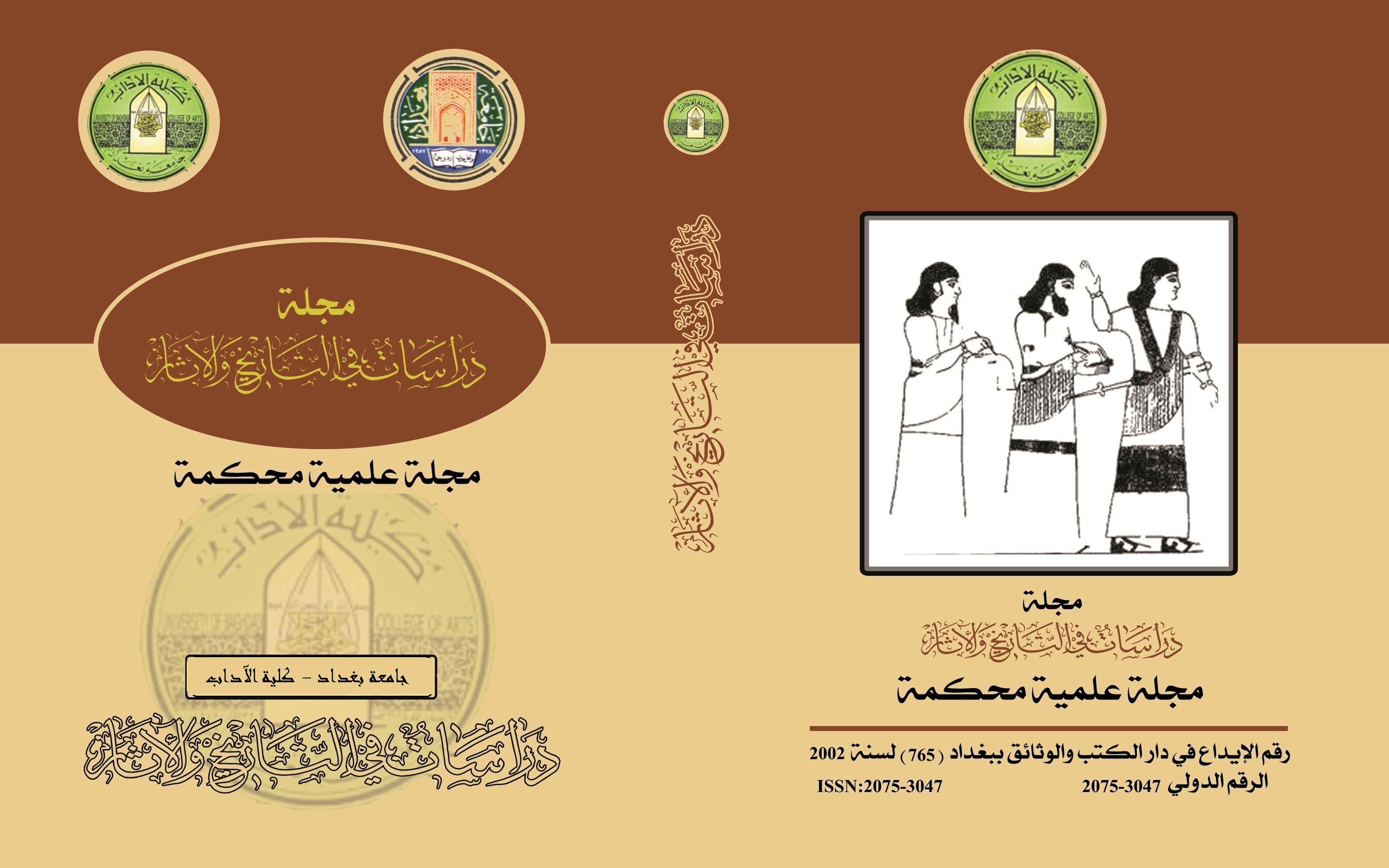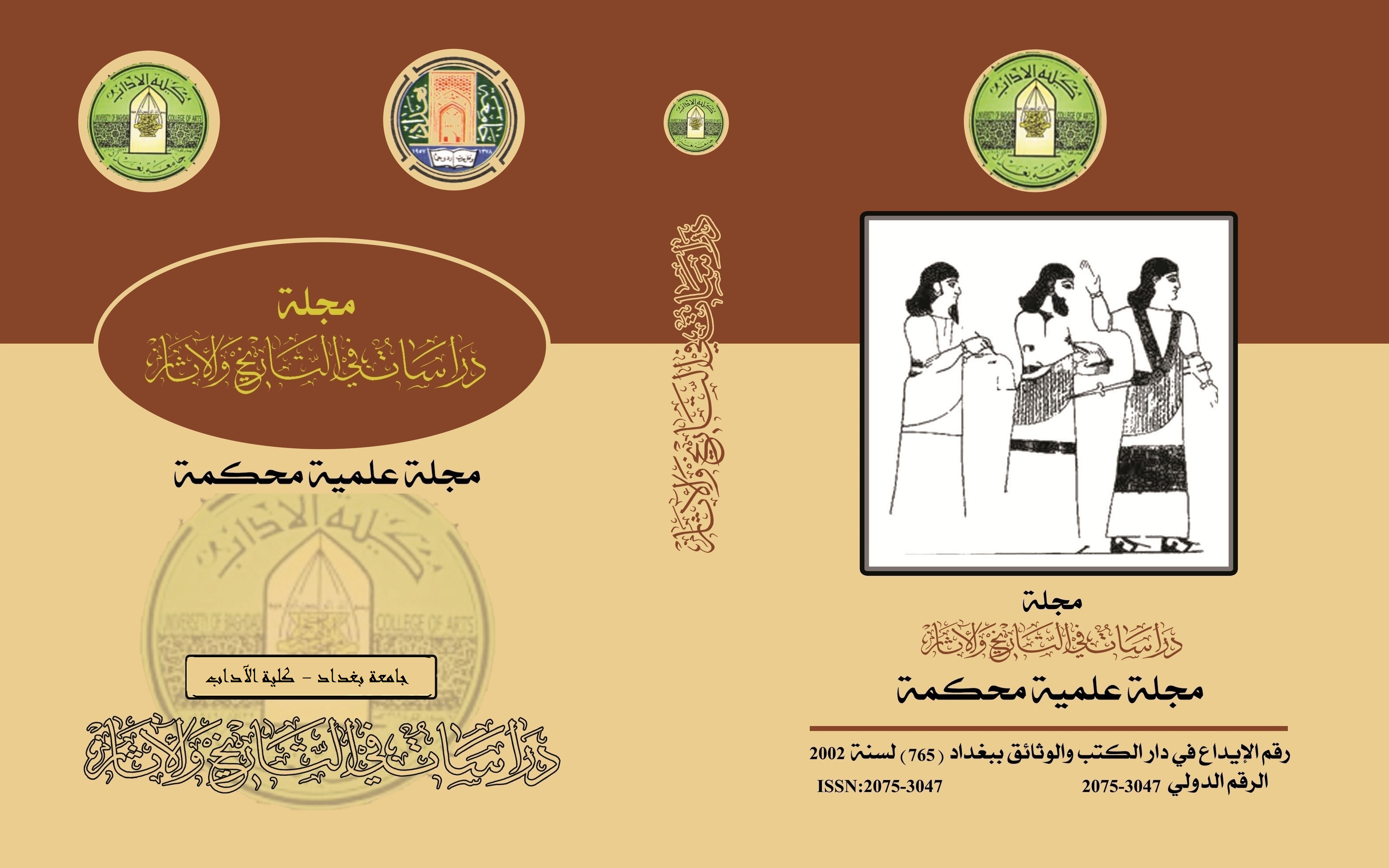ألجامع ألنوري و منارته ألحدباء (آخر أثر تأريخي أسلامي يدمر في الموصل )
الكلمات المفتاحية:
الجامع، اسلامي، زنكي، تاريخي، نينوىالملخص
عاشت نينوى عصورا تاريخية موغلة بالقدم (عاصمة الاشوريين سنة 1080 ق.م ) وتنوعت عليها الحكومات التي تركت اثرا او مجموعة اثار متنوعة وثّقت وسجلت تواجدها على ارضها، ومثلها كانت الموصل (عبورياء الارامية) وعرفت باسم الحصنين عند قوات الجيش العربي الاسلامي الذي اتخذ من الضفة الغربية لنهر دجلة مقرا وسكنا عند الفتوحات الاسلامية للجزيرة وجبال الاكراد (16ه\637م -21ه\641م) فاقيمت هناك دار الامارة والمسجد وخطط القبائل العربية، فوصلت بذلك بين العراق و الجزيرة وقيل ما بين ضفتي دجلة (حيث نينوى الاشورية على الضفة الشرقية منه)، ومن هذه العصور التاريخية التي شهدتها الموصل كان الوجود الزنكي على يد عماد الدين زنكي (الذي استقل بحكم المدينة عن السلاجقة فترة خلافة المستضئ العباسي) سنة 521ه\1132م ومجموعة الاثار والعمائر التي شيدت، ومنها الجامع النوري ومئذنته الطويلة الحدباء (ارتفاعها 65 م)، ترجع عمارة المكان الى القائد نورالدين محمود زنكي الذي قرر سنة566ه\1170م اقامة مسجد جامع اكثر سعة من العمري (جامع الفتح) الذي ضاق بالمصلين، فكان ثاني جامع اتخذ موقعه بالساحل الايمن من الموصل، على الضفة الغربية من دجلة الخير، تخطيطه عبارة عن مصلى مستطيل الشكل مساحته (143م) ترفع سقفه اعمدة رخام منه يتوصل للصحن الذي خلى من المجنبات والمؤخرة فكان ذلك ميزته الهندسية وعمارته التي استغرقت سنوات ثلاثة ليفتتح (سنة 568 ه\1173 م) بحضور نورالدين الذي صلى فيه ورتب كادره العامل والاحباس الموقفة لادامته فكان من اشهر المعالم الاسلامية للموصل وكذلك اعلن عن اقامة مدرسة بنفس الموقع مكملة للجامع ومنارته التي اعتلت الركن الشمالي الغربي من حرم الجامع و نالت شهرتها في دقة تصميمها الهندسي وزخارفها والحسابات الهندسية للارتفاع (فهي حسب الإحصاءات الاثارية اطول الابراج المائلة من سبعة عشرة برج مائل بالعالم ) وهندسة تخطيطها قسمين، الاول قاعدة حجرية متينة بارتفاع (8م) والثاني العلوي من الآجر وبارتفاع (7م ) تعلوه بدنة على شكل سبع وحدات دقيقة الزخرفة قطرها (3م) وارتفاع (20م ) مميزة اضافة الى سلمين داخليين كفكرة عمارية هندسية لعلاج ثقل المنار وارتفاعه نسبة لجاذبية الارض والانحراف الذي بسببه عرفت بالحدباء لاحقا، بسبب عوامل مناخية كذلك المياه الجوفية ورغم ذلك ظلت شاخصة مرتفعة على مدى تسعة قرون من عمر الزمن (كانت ادرجتها مؤسسة الصندوق العالمي للآثار والتراث ضمن قائمة اكثر مئة اثر مهددة في العالم ) تحكي قصة عبقرية المعمار ابراهيم الموصلي وذكائه في علاج ارتفاعها ودراسة حالات الطقس واتجاه الرياح واخذها بالحسبان على العكس من عمارة الجامع الذي تعرض لعمليات بناء وترميم متكرره (اخرها هدمه واعادة بنائه بالكامل مع المدرسة عام 1944 م) فهي الاثر الوحيد الاصيل الباقي من المبنى برمته، حتى طالت الجميع يد الدمار السوداء لتقضي على تاريخ كامل من ضمن ما تخرب من اثار المدينة التاريخية(مثل مدينة الحضر ومدينة النمرود الاثرية بالكامل، تدمير محتويات متحف نينوى، اتلاف محتويات المكتبات) على يد عصابات داعش المجرمة فكان الموقع اخر مافجرته عند انسحابها مذلولة على يد قوات التحرير العراقية في( 25 رمضان لسنة 2017م) منهية بذلك قصة حضارة عميقة الاثر رسمتها ملامح الزمن وانجازات الحكام امتدت لقرون، وذلك هو محور بحثنا الذي اهتم باستعراض الجامع والمنارة تخطيطا وهندسة ونفقة ومراحل التجديد والتعمير حتى الاعلان حديثا عن تولي مركز التراث العالمي وبتمويل من دولة الامارات العربية اعادة اعمار الجامع والمئذنة والارض المحيطة بها ضمن خطة عمل تستغرق سنوات خمس ونفقة تبلغ خمسون مليون دولار، بالاضافة الى التعريف بالموصل ومكانتها التاريخية كذلك القائد نورالدين زنكي، ومقدمة وخاتمة وتوصيات مطالبة بتسجيل الاثر لدى المنظمات الدولية المشرفة على نفائس الاثار بالعالم، وتوثيق الاعلان رسميا بان المئذنة كانت من اطول الابراج المائلة عالميا، واقامة حملات دعائية للتعريف بالاثر وما تعرضت له المدينة وكنوزها التاريخية و الاثارية من تخريب ونسف لاكثر معالمها التاريخية.
المراجع
ابن الاثير، علي بن محمد (ت630ها)، الكامل في التاريخ، تحقيق عبد الله القاضي، دار الكتب العلمية، بيروت، 1987.
ابن الوردي، تاريخه، ج2/234؛ ابن الاثير، التاريخ الباهر في الدولة الاتابكية (الموصل)، تحقيق عبد القادر طليمات، القاهرة، 1963
ابن بطوطة، محمد بن عبد الله اللواتي الطنجي (779ه)، تحفهة النظار في غرائب الامصار وعجائب الاسفار، تقديم، محمد العريان، مراجعة، مصطفى القصاص، دار احياء العلوم، بيروت.
ابن عماد، عبد الحي بن احمد بن محمد الحنبلي(ت1089ها)، شذرات الذهب في اخبار من ذهب، ط1 ، تحقيق، محمود وعبد القادر الارناؤؤط، دار ابن كثير،دمشق،1986.
ابن كثير، اسماعيل بن عمر ابو الفداء(ت774ها)، البداية والنهاية ،دار الفكر ، بيروت،1986.
ابو شامة، عبد الرحمن بن اسماعيل(665ها)، الروضتين في اخبار الدولتين النورية والصلاحية ،تحقيق، ابراهيم الزيبق، مؤسسة الرسالة،بيروت،1997.
جواد علي، المفصل في تاريخ العرب قبل الاسلام، ط4، دار الساقي، 2001م.
الديوه جي، سعيد، تاريخ الموصل، مطبوعات المجمع العلمي العراقي، 1982.
الذهبي ،شمس الدين محمد بن احمد بن قايماز(ت748ها)، سير اعلام النبلاء، ط3 ،تحقيق مجموعة من المحققين، مؤسسة الرسالة ،1985.
رشاد، عبد المنعم الموصل في عهد الاتابكة، موسوعة الموصل.
الزركلي، خير الدين بن محمود بن محمد(ت1396ها)، الاعلام، دار العلم للملايين،2002.
سبط ابن الجوزي، شمس الدين يوسف بن قزاوغلي (ت654ها)، مرآة الزمان في تواريخ الاعيان، دار الرسالة ،دمشق،2013.
سليمان، عامر، الموصل في الالف الثالث قبل الميلاد، ضمن موسوعة الموصل الحضارية، ط1، جامعة الموصل، العراق، 1991.
صائغ، سليمان، تاريخ الموصل، مصر، مصر، 1923.
طه، عبد الواحد ذنون، الموصل في العهد الاموي، ضمن موسوعة الموصل .
العمري، ياسين بن خيرالله(ت1235ها)، منية الادباء في تاريخ الموصل الحدباء ، تحقيق سعيد الديوه جي، مطبعة الهدف، موصل، 1955.
محمد، غازي رجب، العمارة العربية في العصر الاسلامي في العراق، بغداد، 1989.
الملاح، هاشم يحيى، تحرير الموصل وتمصيرها في الراشدي، موسوعة الموصل الحضارية، ط1، جامعة الموصل، العراق، 1992.
مهدي عبد الحميد، عمارة وزخرفة الجامع النوري في الموصل، مجلة الملوية للدراسات الاثارية والتاريخية، مجلد الرابع، عدد السابع، س4، اذار، 2017م.
ياقوت الحموي، شهاب الدين ابو عبد الله (ت 626 ه)، معجم البلدان، ط2، بيروت، 1995.
اليعقوبي، احمد بن ابي يعقوب (بعد 292 ه)، تاريخ اليعقوبي، بيروت.
يوسف، شريف، تاريخ فن العمارة العراقية في مختلف العصور، بغداد، 1982.
التنزيلات
منشور
إصدار
القسم
الرخصة

هذا العمل مرخص بموجب Creative Commons Attribution 4.0 International License.
:حقوق الطبع والنشر والترخيص
بالنسبة لجميع البحوث المنشورة في مجلة دراسات في التاريخ والآثار، يحتفظ الباحثون بحقوق النشر. يتم ترخيص البحوث بموجب ترخيص Creative Commons CC BY 4.0 المفتوح ، مما يعني أنه يجوز لأي شخص تنزيل البحث وقراءته مجانًا. بالإضافة إلى ذلك ، يجوز إعادة استخدام البحث واقتباسه شريطة أن يتم الاستشهاد المصدر المنشور الأصلي. تتيح هذه الشروط الاستخدام الأقصى لعمل الباحث وعرضه.
:إعادة إنتاج البحوث المنشورة من الناشرين الآخرين
من الضروري للغاية أن يحصل الباحثون على إذن لإعادة إنتاج أي بحث منشورة (أشكال أو مخططات أو جداول أو أي مقتطفات من نص) لا يدخل في نطاق الملكية العامة أو لا يملكون حقوق نشرها. يجب أن يطلب الباحثون إذنًا من مؤلف حقوق النشر (عادة ما يكون الناشر).
يطلب الإذن في الحالات التالية:
بحوثك الخاصة المنشورة من قِبل ناشرين آخرين ولم تحتفظ بحقوق النشر الخاصة بها.
مقتطفات كبيرة من بحوث أي شخص أو سلسلة من البحوث المنشورة.
استخدم الجداول والرسوم البيانية والمخططات والمخططات والأعمال الفنية إذا لم يتم التعديل عليها.
الصور الفوتوغرافية التي لا تملك حقوق لنشرها.
لا يطلب الإذن في الحالات التالية:
إعادة بناء الجدول الخاص بك مع البيانات المنشورة بالفعل في مكان آخر. يرجى ملاحظة أنه في هذه الحالة يجب عليك ذكر مصدر البيانات في شكل "بيانات من ..." أو "مقتبس من ...".
تعتبر عروض الأسعار القصيرة معقولة الاستخدام العادل ، وبالتالي لا تتطلب إذنًا.
الرسوم البيانية ، الرسوم البيانية ، المخططات ، الأعمال الفنية التي أعاد الباحث رسمها بالكامل والتي تم تغييرها بشكل ملحوظ إلى درجة لا تتطلب الاعتراف.
الحصول على إذن
لتجنب التأخير غير الضروري في عملية النشر ، يجب أن تبدأ في الحصول على أذونات في أقرب وقت ممكن. لا يمكن لمجلة الآداب نشر بحث مقتبس من منشورات أخرى دون إذن.
قد يمنحك مالك حقوق الطبع والنشر تعليمات بشأن شكل الإقرار الواجب اتباعه لتوثيق عمله ؛ بخلاف ذلك ، اتبع النمط: "مستنسخ بإذن من [المؤلف] ، [كتاب / المجلة] ؛ نشره [الناشر] ، [السنة]." في نهاية شرح الجدول ، الشكل أو المخطط.



















